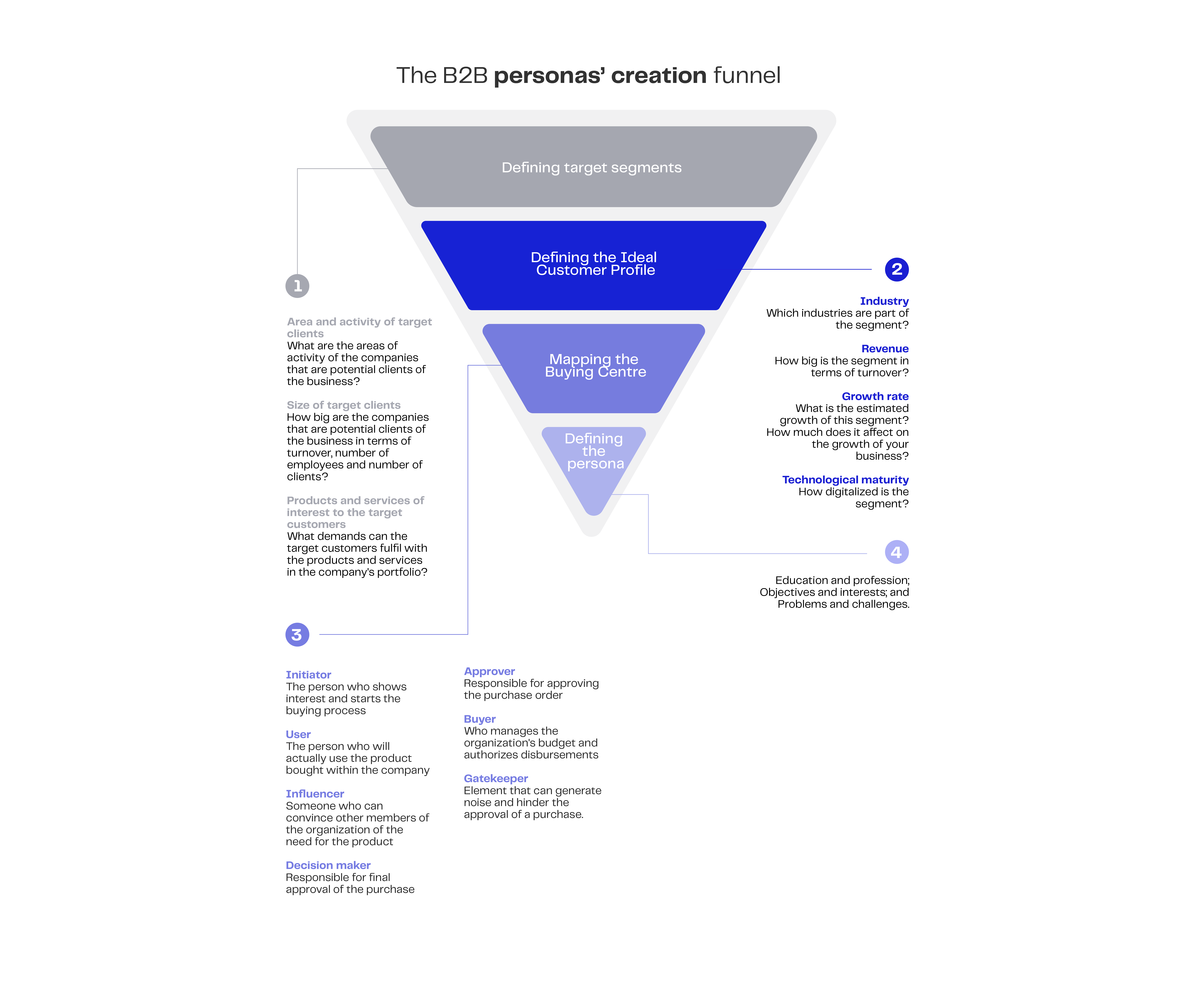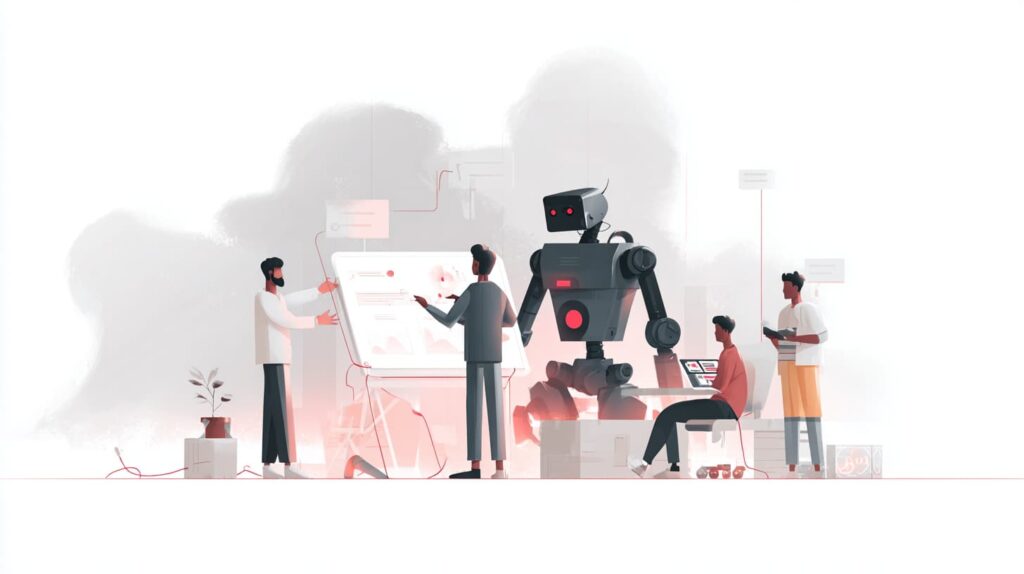By EloInsights, in collaboration with Marina Belarmino
- Defining personas is one of the most valuable tools within a company’s customer experience (CX) strategy.
- Personas help organizations understand their customers, thus, creating more precise, personalized and effective strategies.
- Applying personas can also be done in the B2B reality, stablishing more valuable, personalized and lasting customer relationships.
We know that in an increasingly competitive scenario, companies that want to stand out in highly competitive business environments need to use customer experience techniques to get ahead of the competition.
As we have already covered in EloInsights, one of the main techniques used in this context is the creation of personas, a method that makes it possible to establish consumer profiles with an elevated level of precision and detail. This approach allows organizations to better understand their customers’ needs, desires and behaviors, easing more assertive and informed business decisions.
What is a persona in the context of CX?
A persona could be synthesized as a fictional character that characterizes a group of customers, bringing together the main profile attributes captured in an earlier mapping study, which includes demographic, ethnographic and behavioral surveys.
Personas enable a company’s teams to develop more effective marketing and communication strategies, with better targeting, which translate into better results. Personas also make it possible to improve the quality of the products and services offered, since the organization can see its consumers’ demands more clearly.
But the work involved in creating personas is not limited to the B2C (business-to-consumer) market. At EloGroup, one of our work fronts is to develop precisely these personas aligned with our clients’ business.
How to develop personas in the B2B market?
Just as it is in the B2C universe, this fundamental CX technique is especially useful in this other context too, as it helps companies to have a more assertive idea of who the potential customers are in the corporate field where they work, optimizing results from a deeper understanding of the needs and desires of their target audience. With a structured view of personas, organizations can create more effective and personalized strategies, improve sales conversion, increase loyalty and guarantee a more solid relationship with their customer base.
When building B2B personas, we start with an in-depth understanding of the target audience, with a view to segmenting customers according to sector, size, geographic area, etc. This fractionation provides input for building the ideal customer profiles served by the company, which are complemented by analyzing their interaction journey with the business. In this analysis, we use the Buying Centers framework, from which it is possible to find the players who directly influence the buying process and focus on detailing the most relevant personas for the business’ conversion and retention strategy.
As with work in the B2C context, the idea is to delve deeper into the characteristics of customers, through surveys and interviews with stakeholders, to broaden our understanding of them and devise more precise, personalized and effective actions.
The B2B persona funnel
At EloGroup, we apply the concept of personas to the B2B segment using a four-stage funnel logic, the ultimate aim of which is to identify the personas within our client companies (ideal customer profiles) with the greatest potential for using conversion and retention.

1 - Defining target segments
In this first stage, we must answer a fundamental question: what are the target segments for the company’s sales strategy?
The purpose of this question is to help define the priority business segments, defined based on a group of characteristics of the target audience. Among these, we would highlight the three main ones:
- Area and activity of target clients: What are the areas of activity of the companies that are potential clients of the business? Are they in the health, education, technology or other sectors?;
- Size of target clients: How big are the companies that are potential clients of the business in terms of turnover, number of employees and number of clients? Can they be categorized as large, medium or small?; and
- Products and services of interest to the target customers: What demands can the target customers fulfil with the products and services in the company’s portfolio?
Based on the answers to these key questions, we group the companies into business segments and select which target segments are priorities for the organization’s sales strategy, based on the conversion potential identified.
2 – Defining the Ideal Customer Profile
After selecting the priority business segments, we need to answer the following question: what are the main attributes that characterize the target segments?
At this stage, the funnel begins to narrow, as the organization focuses on gaining a more detailed understanding of the characteristics of the target segments that were prioritized in the previous stage. This construction is called “Ideal Customer Profile” and its main goal is to record the characteristics that are the starting point for defining the organization’s relationship actions with these customers. Some examples of the characteristics that make up the Ideal Customer Profile are:
- Industry: which industries are part of the segment?;
- Revenue: how big is the segment in terms of turnover?;
- Growth rate: what is the estimated growth of this segment? How much does it affect on the growth of your business?; and
- Technological maturity: how digitalized is the segment?
3 - Mapping the Buying Centre
For each Ideal Customer Profile, the following question must be answered: how are the buying centers structured and what are the decision-making profiles?
This stage is essential for identifying the players who directly influence or take part in the buying process for each Ideal Customer Profile. The relationship and sales strategy needs to be designed not only based on the characteristics of the company, but also of the people behind the buying process. Some examples of members of buying centers within companies:
- Initiator: the person who shows interest and starts the buying process;
- User: the person who will actually use the product bought within the company;
- Influencer: someone who can convince other members of the organization of the need for the product;
- Decision maker: responsible for final approval of the purchase;
- Approver: responsible for approving the purchase order;
- Buyer: who manages the organization’s budget and authorizes disbursements; and
- Gatekeeper: element that can generate noise and hinder the approval of a purchase.
This analysis is fundamental to defining which buying center actors, from each Ideal Customer Profile, will be the target of the sales and relationship strategy.
4 - Defining the persona
At last, having defined the target actors for the sales and relationship strategy, we can immerse ourselves in these profiles to gain an in-depth understanding of some key elements such as:
- Education and profession;
- Objectives and interests; and
- Problems and challenges.
This understanding enables us to design sales and retention strategies that focus on communicating in an assertive and well-founded manner with the players who will influence the decision-making in the B2B context.
How important is the persona in the B2B sector?
By defining the Ideal Customer Profile and identifying the key players in the buying center, an organization can define, with a prominent level of precision and depth, the target players to be affected by its sales and relationship strategy. By getting to know this customer in greater detail, they are able to draw up an action plan based on concrete data, which will help to set up more personalized, effective and long-lasting commercial relationships that tend to open broad avenues of value in the long term and contribute to the organization’s overall sustainability.
As in the B2C sector, working with personas is proving to be an extremely valuable tool for organizations that want to pave their way towards a more prosperous future with greater value for all stakeholders.
MARINA BELARMINO works as Senior Manager at EloGroup.











